False Morel vs Morel Mushroom: Stay Safe and Know the Difference
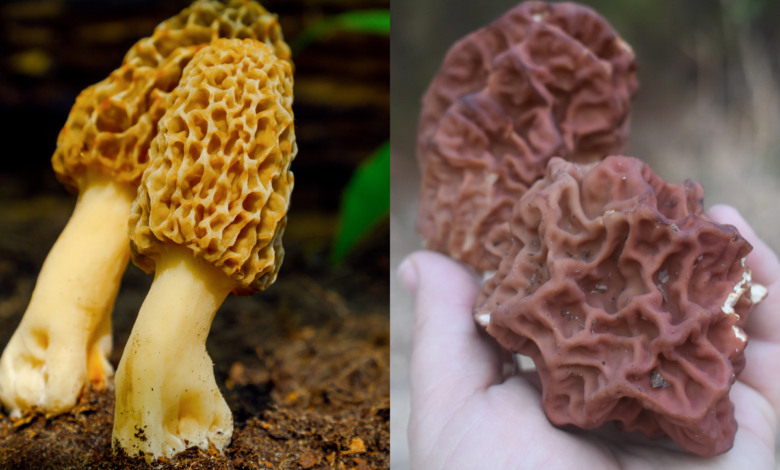
I am not sure which is more fun for me – savoring the delicious taste of morels or spending time in the spring woods looking for them. Either way, the idea of collecting a basket of morels from the woods is tempting,
But there is one aspect of morel hunting that we cannot afford to overlook while collecting morels. It is to be 100% certain that the mushroom is edible.
Unfortunately, the false morels, which are lookalikes, are dangerous mushrooms that can have severe adverse effects on the human system. The worst-case scenario is death.
I am no mycologist, but years of experience in the woods have sharpened my ability to compare the false morel vs morel mushrooms. Plus, I have discussed the topic with a few experts to shed more light on it.
So, here is a quick guide for identifying false morels.
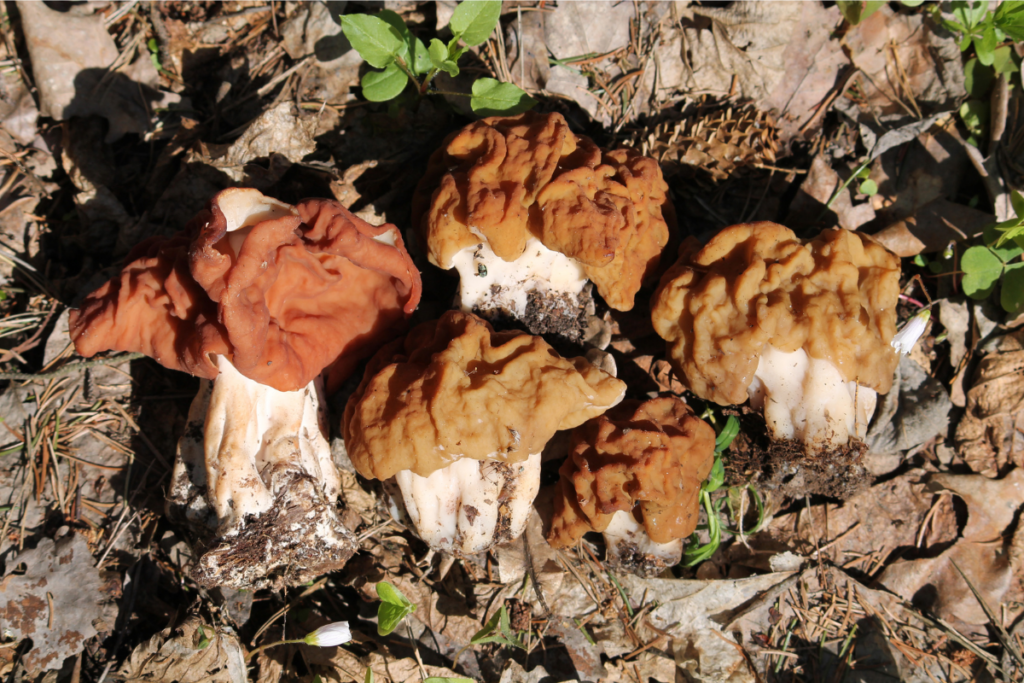
What is a False Morel?
When I first heard the term “false morel” I thought that it indicated a single mushroom species. But I was wrong.
The morel mushroom family comes under the genus Morchella and includes around 80 varieties. The term “false morel” includes multiple species like the Gyromitra esculenta, Verpa, Hellvella, and Disciotis. Among these, the Verpa and Gyromitra are two varieties that are commonly mistaken as edible morels.
The other variety that looks somewhat similar is the Helvella lacunosa, or the Elfin’s Saddle. But the leaden grey color of the cap and its saddle-like shape of the cap make these mushrooms easier to differentiate from true morels.
Now, multiple varieties of the Gyromitra mushroom are found across the world. However, we do not have expert-level identification skills to differentiate between them. Identifying them based on the basic features is good enough for most foragers.
The true morels include the white morel, the black morel, the half-free morel, and the burn-site morel. Not only do the false morels look similar to morels, but they have a similar nutty flavor, and a fruity fragrance as well. They even grow in the same places as the true morels.
Unlike morels, the Gyromitra can be found throughout the year. However, Verpas grow during the morel season and in some areas, they can grow a week or two earlier than the morels.
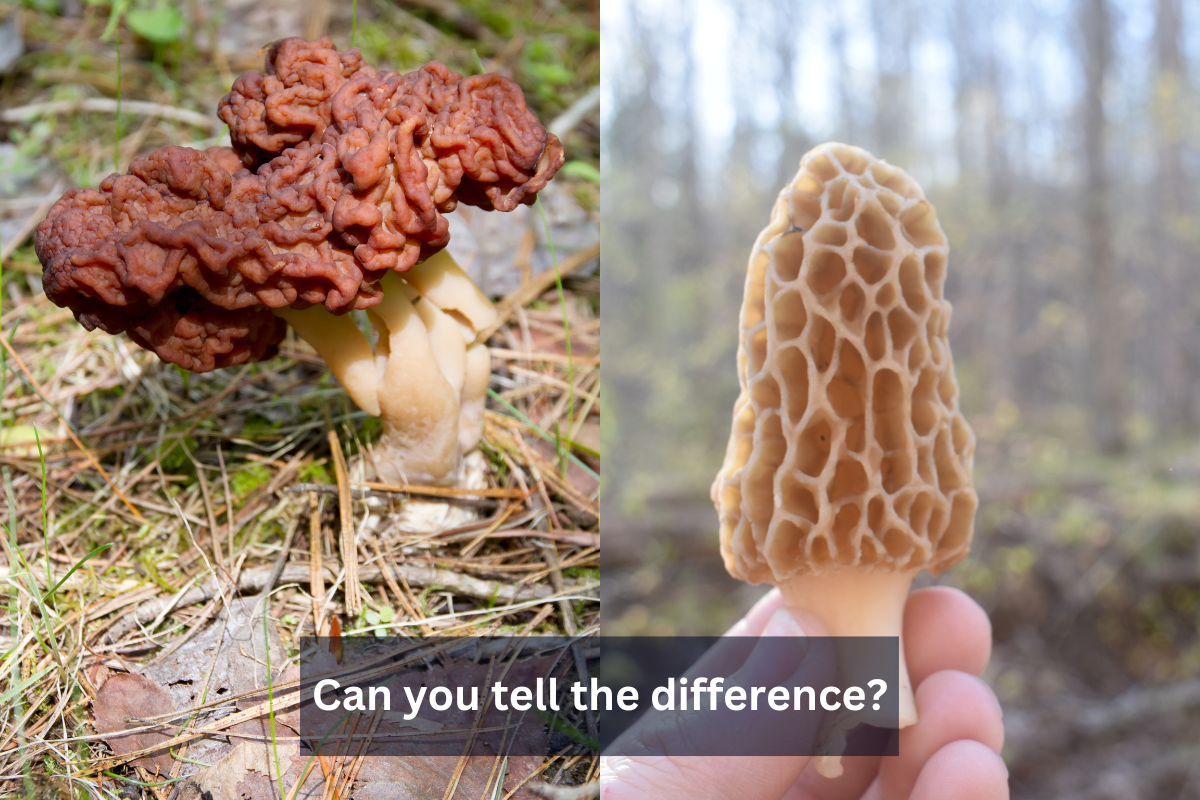
Morel Mushroom vs False Morel
To understand the difference between the visual characteristics of the morel and false morel, let us understand how a typical morel mushroom looks like.
The most distinctive feature of a morel mushroom is its honeycomb-like cap. The mushroom has a pointed cone-like shape and they are between 1-4 inches tall. In some ways, they resemble an inverted pinecone that is longer than it is wide. Depending on the variety, the color of the ridges and pits can vary from pale to dark.
Morels have a smooth stem with no pits. The stems can be whitish, creamish, or yellow-colored. In most cases, the stem is crumbly. Most importantly, if you cut open the mushroom horizontally, you will find the stem and the cap to be hollow.
With so many features to check, you may think that identifying morels is too easy.
Maybe not. The problem is, the morel caps come in various shapes. They can be skinny, fat, or slender. In some cases, their yellow, gray, brown, or black colors can overlap with that of the lookalikes.
Comparing the morels with their lookalikes in terms of physical appearance will help you in identifying them.
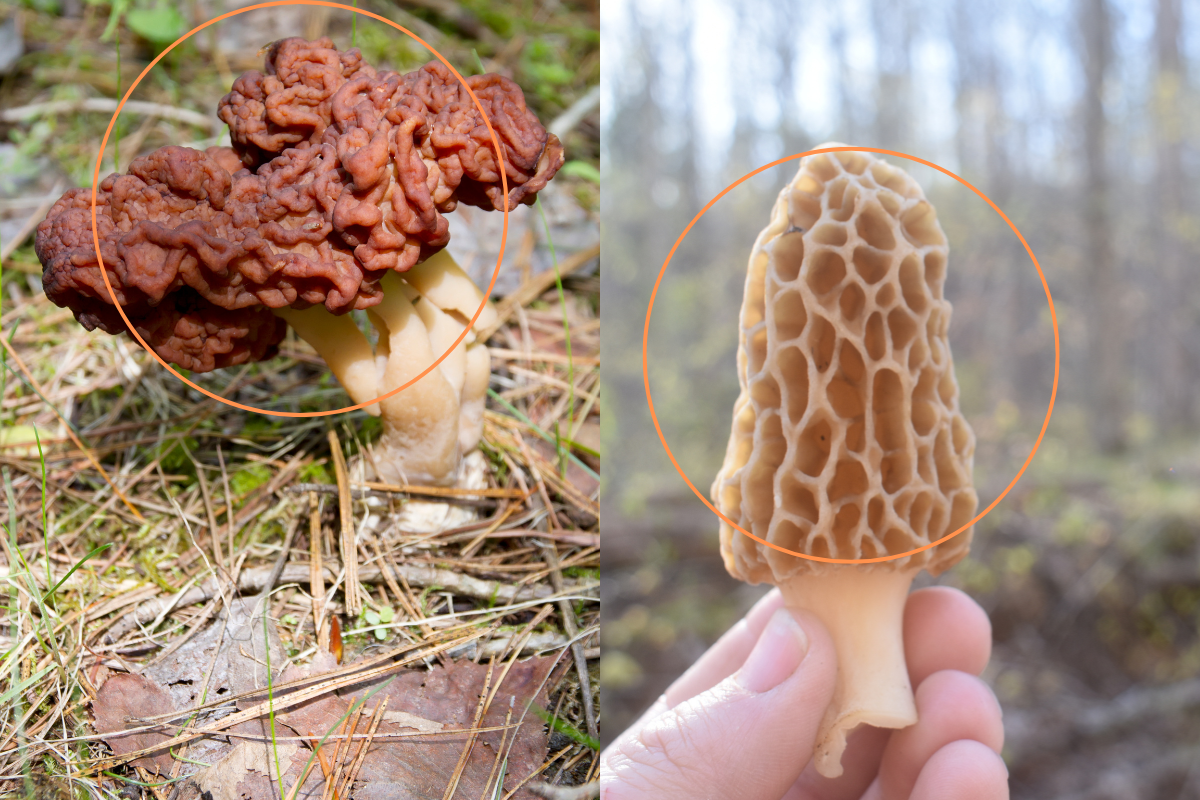
The Mushroom Cap
The cap of a Gyromitra mushroom is deeply furrowed, wavy, and twisted. To me, some of these look like the evil brain of a supervillain that bulges outwards. The color of the cap can be red-brown, or chestnut-red and it darkens as the mushroom ages. The cap is brittle and the surface is moist.
The caps of the Verpa mushrooms are wrinkled or lobed. The cap is bell-shaped and light brown in color. Generally, the overall length of a fake morel is longer than the true morel. They can be between 3-8 inches tall. The widest portion of the caps can be 2.5-3 inches.
For true morels, the cap is longer than the stem. However, this is not true for half-free morels, which are true morels of a smaller variety.
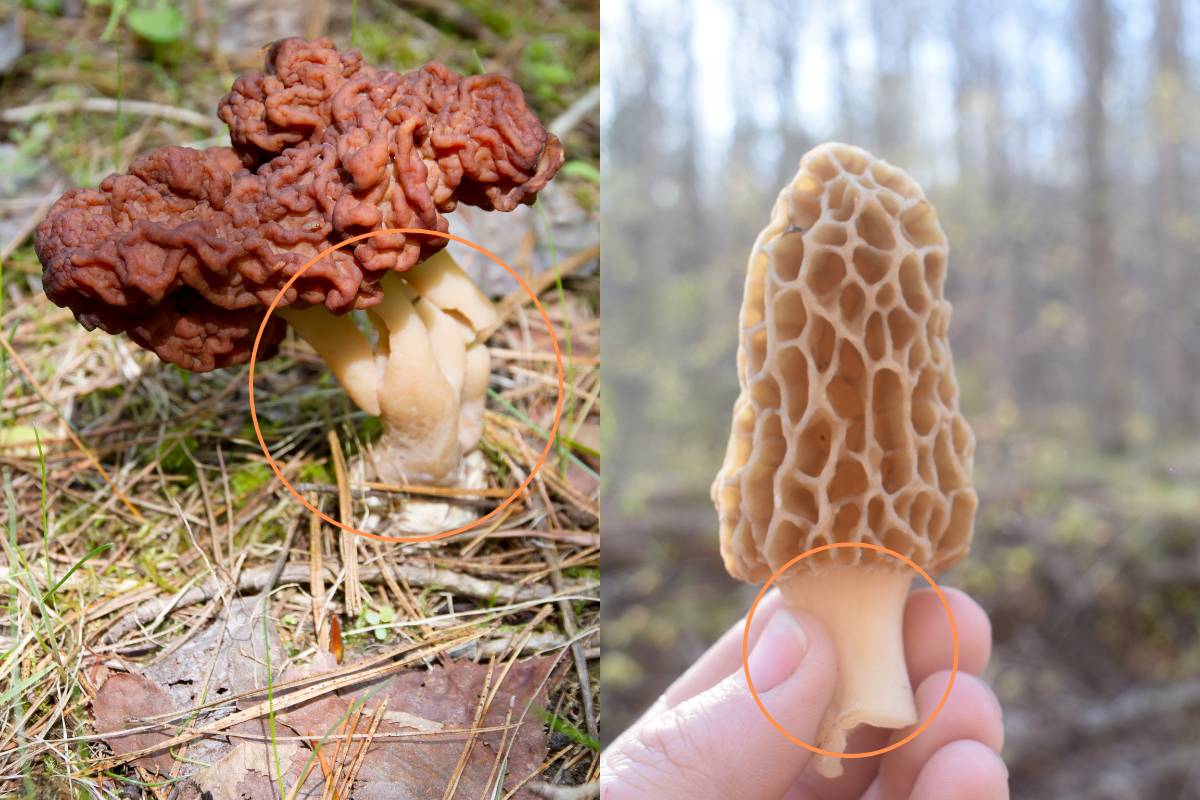
Cap Attachment
In true morels, the cap is attached to the bottom of the cap. The attachment is the same for Gyromitra mushrooms. These keep the cap strongly attached to the stalk.
But, the Verpa mushrooms have a different cap attachment than the morels and Gyromitra. The cap is attached only at the apex of the stalk or stipe. In other words, the cap hangs around the stem like a conical lampshade. Since the connection point is weak, the cap can drop off the stripe easily. It is not unusual to find a large bed of capless Verpa in the woods after a storm.
The Internal Structure
The main difference between the Gyromitra and a true morel stands out when you slice them in half from the top and compare. Unlike the hollow morel, the Gyromitra is entirely solid and much heavier. Drop it and the mushroom will shatter into pieces.
Likewise, the Verpa mushroom is partially stuffed inside. While they are not as solid as the Gyromitra, they are not hollow either. The inside of the stalk is stuffed with a cottony tissue.
Risks of Eating a Fake Morel
False morels contain multiple toxic chemicals, but the primary toxin is gyromitrin. The stomach acids hydrolyze gyromitrin to generate toxic and carcinogenic hydrazines. Interestingly, the highly toxic hydrazine generated is monomethylhydrazine (MMH), which is also used as rocket fuel.
The amount of toxin content in a mushroom varies. Some varieties may contain high amounts of gyromitrin, while others may contain trace amounts.
The most common effects of the toxin are gastrointestinal symptoms. Most people have no problems for the first 5-10 hours after mushroom consumption. After that, they start to experience symptoms like abdominal pain, vomiting, and diarrhea.
The toxins can also affect the central nervous system and alter blood glucose levels. The neurological effects include headache, dizziness, and lethargy. When left untreated, this can lead to delirium, seizures, and coma.
And it can get worse.
In severe cases, a second attack can happen after a period free from symptoms. The patient can suffer from bruising and bleeding as the toxin affects the process of blood clotting. Some patients can experience convulsions and such cases can be fatal.
When you check the edibility status of the Verpa Bohemica, things get confusing. The variety is often considered safe and consumed in some areas. A few mycologists have marked them to be as edible as true morels. On the other hand, some research suggests that the mushroom is inedible as it can cause gastrointestinal symptoms and loss of muscle coordination.
The truth is there is a lot we do not know about how toxins in mushrooms work. Besides, the exact effects vary depending on the individual. This is where things can get somewhat spooky.
Some people can consume these mushrooms without any adverse reactions. White for others, it can be a nightmare. For some, even inhaling the vapors while cooking the mushroom can have adverse effects. The good news is that cases of acute poisoning from Verpa and Gyromitra are rare.
Surprisingly enough, the “true” morels are toxic too. They can even be lethal. If you think I am exaggerating, check out these reports of death from consuming it. The toxicity can lead to nausea, vomiting, and diarrhea when the mushrooms are consumed fresh or undercooked. So, make sure that the morels are properly cooked before consumption.
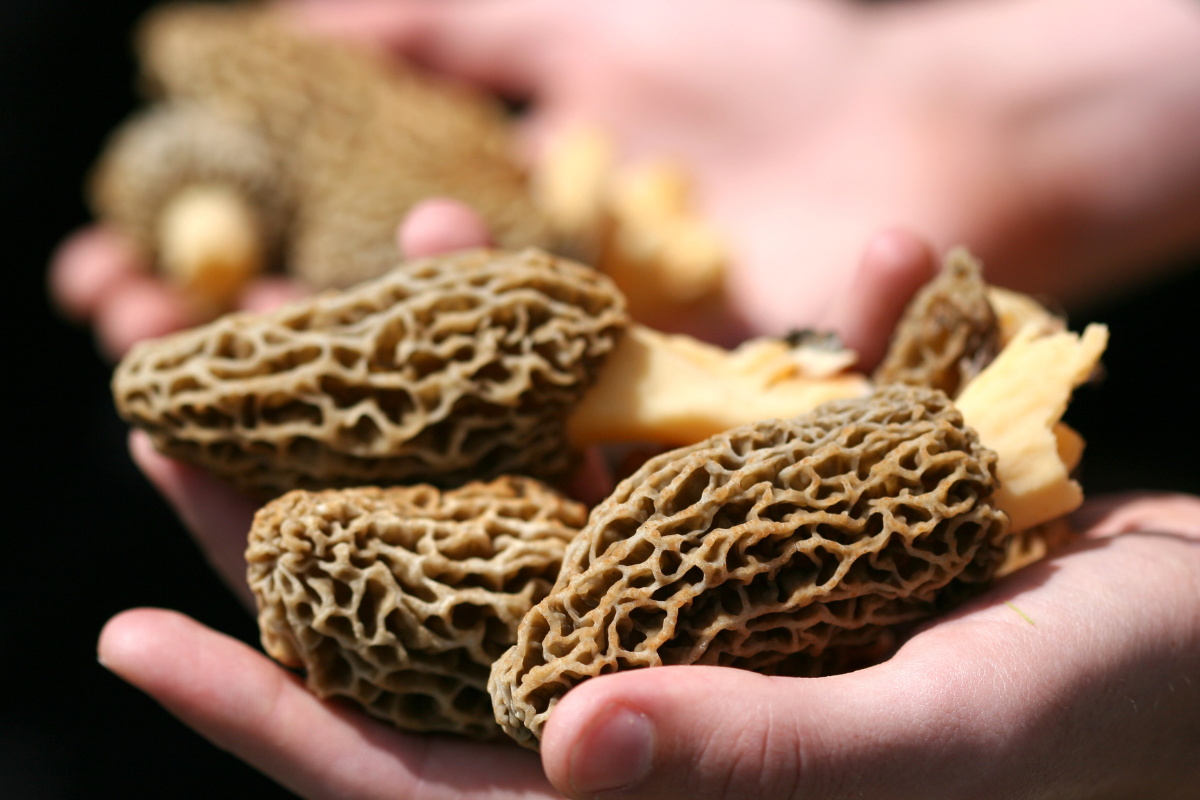
Tips for Safely Foraging Morel Mushrooms
I think this old saying highlights the golden rule of mushroom foraging – “There are old mushroom hunters and there are bold mushroom hunters. But there are no old bold mushroom hunters.”
It is best to exercise caution while collecting mushrooms from the wild. If you have doubts, get help from an experienced mushroom forager to identify the mushroom. Coming across a cache of morels on the forest floor is exciting. But, if you are not 100% certain, just leave it behind.
Perhaps you trust the data about the non-toxicity of Verpa Bohemica and want to consume them. I would suggest consuming very small amounts to start with. This will help you to understand your tolerance level against the toxins. If you are trying any new mushroom species, moderation is the key.
No matter the type of mushroom you collect, make sure to cook them the right way. Without cooking them with the proper amount of heat, even the true morels are not safe for consumption. If you have any doubts, cook them for a few minutes more.
What about eating out?
In restaurants, do not hesitate to ask questions about how the mushroom was sourced and the methods of preparation. If the answers do not satisfy you, pick another dish.
Final Thoughts
Hunting for morels is a fun activity and they are a prized delicacy. But keep in mind that mushroom poisoning has become a serious food safety problem worldwide. This is why the false morel vs morel discussion is super important. Never forget that the wrong ones can kill you.
Mushrooms may look magical in the wild, but not all of them are benign. While experienced mushroom hunters clearly know what a false morel looks like, it is not the same for someone new to foraging.
This article is not an absolute guide for identifying “true” morels. But, if you are starting out, it will help you to differentiate “true” morels from “false” morels.
I started mushroom hunting by following my uncle into the woods who was an expert forager. If you can find someone to guide you during the mushroom hunts, great. That is one of the best ways to learn how to spot those morel imposters.


